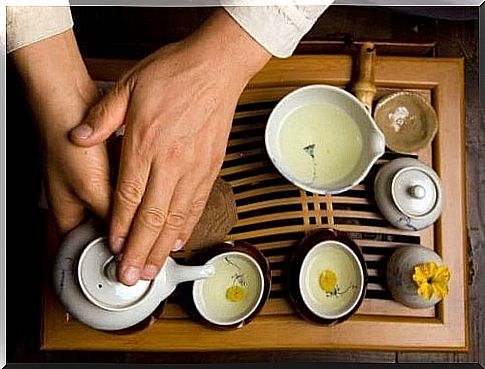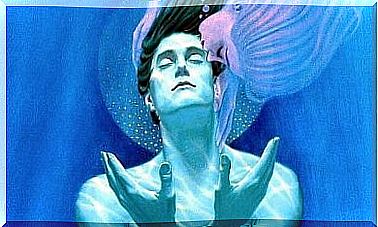Tea Ceremony And Conscious Meditation
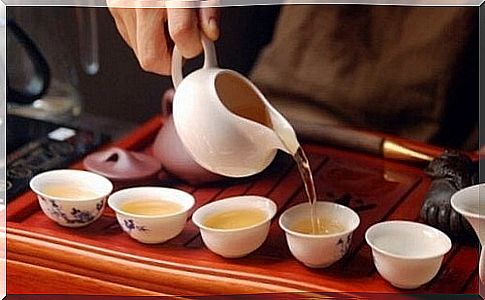
The tea ceremony is part of the rituals of Zen meditation. This is what in Japan is called Ichigo , which means “a moment, a meeting”. It’s about creating a unique moment that will never come back. The participants focus all their senses on the moment and experience it fully. Therefore, it is like a kind of meditation.
During the tea ceremony , there are different stages. Participants should complete each stage with full awareness. This is the very purpose of the tea ceremony: to fully concentrate on the prevailing moment and to pay attention to even the smallest details of the ritual. Forget all the urgency and worries, forget what comes before and after.
The ritual is a gift of respect and affection that the host gives to his guests. The person hosting the tea ceremony hopes to offer the participants a small moment of ultimate peace. Therefore, she does everything with the utmost dedication and attention to detail.
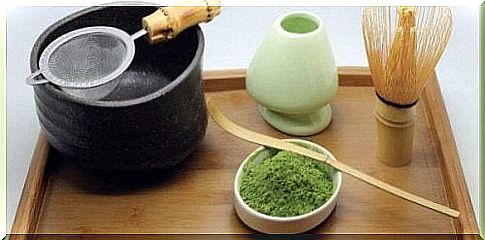
Everyone can be the host
Anyone can host a tea ceremony. It does not matter if it is a man or a woman. The preparations for this ritual take a long time and in Japan they can even take years. In ancient times, samurai practiced the tea ceremony. For that reason, there is something almost sacred about the ceremony.
It is important that the person holding the ceremony knows how to prepare the tea. It can not be done anyway. In the Western world, it can be difficult to do it as accurately and thoughtfully as one does in Japan. In any case, the host should prepare the drink as almost perfectly as possible. The result should be pleasant for everyone, the product of an unusual sensitivity and care.
Furthermore, guests need to know how to drink the tea. The ceremony consists of 15 stages and guests must know them all in order to perform them correctly. From the outside, it probably seems very complicated, but it is not. In fact, the tea ceremony has become increasingly famous in the Western world, and today it is practiced more than ever.
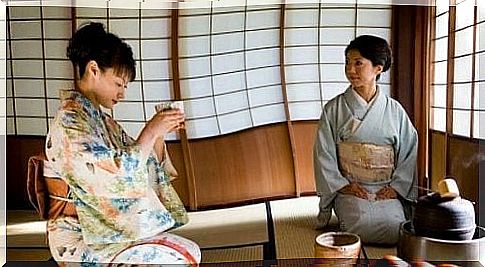
The different stages of the tea ceremony
The tea ceremony consists of 15 different stages. Participants must complete all 15 stages for the ritual to be considered authentic. These stages are:
- Values must consider three main principles: silence, harmony and peace of mind. The host should concentrate on giving these three things to their guests.
- Clean all elements used in the tea ceremony. Purity is a central concept in the ceremony.
- Have enough space for all the guests and prepare the place so they can be received. Take care of the guests’ comfort.
- Appoint a guest of honor. This person will set the tone for the other guests. The guest of honor should be the first to enter the room.
- The host welcomes the guest of honor and exchanges kind words with him and the other guests. She welcomes them in a generous and respectful way.
- The host should offer a simple snack, such as a piece of cake.
- All guests should dress formally. In the western world, guests are dressed in white.
- The host should have all the elements needed to make the tea: water and tea leaves. Everyone should be quiet and watch while the tea is prepared.
- The host slowly pours water into the teapot, so that everyone can observe, listen and experience every second.
- Then the host puts the tea leaves in the water, with the same posture as in the previous stage.
- Then the host serves still tea in each cup.
- The host then hands the teacups to his guests. When the guest receives their cup, he or she utters a few words of gratitude or congratulations.
- Guests drink tea.
- In the tea ceremony, the tea is served in two rounds. After the first round, each guest covers their cup with a plate. The basic ceremony is thus over.
Tea ceremony and meditation
In some tea ceremonies, everyone drinks first from the same cup and then from individual cups. In addition, the tea ceremony is especially effective when the participants are people who practice meditation. The lessons that can be learned from the tea ceremony are both simple and profound: every moment in life is unique and will never come back.
